
|
Now Playing


"Everybody is a potentential murderer. I've never killed anyone,
but I frequently get satisfaction reading the obituary notices . . ."
--Clarence Darrow
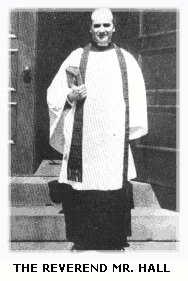 The Hall-Mills murder trial in November and December turned the eyes of the
nation to the white-marbled courthouse in Somerville, New Jersey.
The Hall-Mills murder trial in November and December turned the eyes of the
nation to the white-marbled courthouse in Somerville, New Jersey.
The cast of characters involved in the 1922 "Murders in Lover's Lane" include
the dead:
The Reverend Mr. Edward Hall, forty-one, stubby and balding,
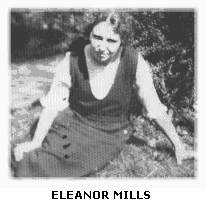 rector of the Protestant Episcopal Church of St. John the Evangelist in New Brunswick,
New Jersey.
rector of the Protestant Episcopal Church of St. John the Evangelist in New Brunswick,
New Jersey.
Mrs. Eleanor Mills, thirty-four, petite, pretty, vivacious, mother of two
children, soloist in the Rev. Mr. Hall's choir.
They had been slain under a crabapple tree in De Russey's Lane on the old Phillips Farm, near their homes, on Friday night, September 16, 1922.
A .32 caliber slug had passed through the rector's brain. The killer or killers had shot the blond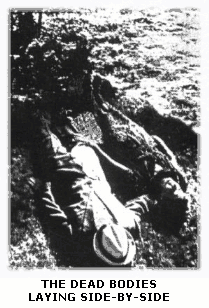 choir singer three times and then slashed her throat. The deed done, somebody arranged the bodies in a position of decorous intimacy and scattered choir singer three times and then slashed her throat. The deed done, somebody arranged the bodies in a position of decorous intimacy and scattered  over them selections from the burning love missiles of Eleanor Mills to her "true heart," Edward Hall. over them selections from the burning love missiles of Eleanor Mills to her "true heart," Edward Hall.
And the living:
Mrs. Frances Stevens Hall, dumpy, plain, severe-looking wife of the pastor,
seven years his senior.
Willie and Henry Stevens, her devoted brothers.
Henry de la Bruyere Carpender, her cousin, member of the New York Stock Exchange.
James Mills, husband of the slain woman, eleven years older, janitor in the school and
sexton of St. John's, raising a family on $35 a week.
Jane Gibson, "The Pig Woman," chief witness in the rather casual 1922 investigation and
due to serve as the state's prime weapon in the new case.
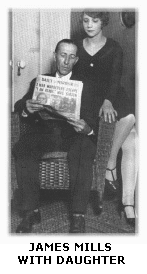 Because of a story in the New York Daily Mirror on July 17, 1926, stating that Mrs. Hall and her brothers and cousin had bribed police and witnesses and sweet-talked the local prosecutor to escape prosecution, the four were indicted for the murder.
The Hall-Mills story, an orgy of murder, intrigue, and purple passion without equal in the Lawless Decade,
owed much of its celebrity to the fact that the departed lovers had committed their
emotions to paper so freely. The widower James Mills sold the letters "Babykins" (Hall) sent to "Gypsy Queen" (Mills) to the newspapers for $500. The special prosecutor, State Senator Alexander Simpson, had eighty-four witnesses,
but his case hinged on one person alone--Mrs. Jane Gibson. The Pig Woman (who raised Poland China pigs), fifty-six and dying of cancer--testified from an iron hospital bed. She testified she saw and heard the defendants that night, but on cross-examination the defense tied her
Because of a story in the New York Daily Mirror on July 17, 1926, stating that Mrs. Hall and her brothers and cousin had bribed police and witnesses and sweet-talked the local prosecutor to escape prosecution, the four were indicted for the murder.
The Hall-Mills story, an orgy of murder, intrigue, and purple passion without equal in the Lawless Decade,
owed much of its celebrity to the fact that the departed lovers had committed their
emotions to paper so freely. The widower James Mills sold the letters "Babykins" (Hall) sent to "Gypsy Queen" (Mills) to the newspapers for $500. The special prosecutor, State Senator Alexander Simpson, had eighty-four witnesses,
but his case hinged on one person alone--Mrs. Jane Gibson. The Pig Woman (who raised Poland China pigs), fifty-six and dying of cancer--testified from an iron hospital bed. She testified she saw and heard the defendants that night, but on cross-examination the defense tied her 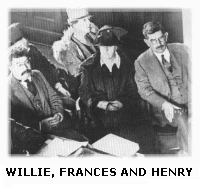 up in all sorts of contradictions and memory lapses. All four defendants did a good job on the witness stand, denying that they had anything to do with the killings. Despite the mass of testimony, the jury was only out for five hours. The verdict was not guilty. Mrs. Hall and her brothers sued the Daily Mirror
for three million dollars and accepted an out-of-court settlement. The Pig Woman would die four years later. The widow and her family would retreat into the close-knit privacy they had always known. up in all sorts of contradictions and memory lapses. All four defendants did a good job on the witness stand, denying that they had anything to do with the killings. Despite the mass of testimony, the jury was only out for five hours. The verdict was not guilty. Mrs. Hall and her brothers sued the Daily Mirror
for three million dollars and accepted an out-of-court settlement. The Pig Woman would die four years later. The widow and her family would retreat into the close-knit privacy they had always known.
[ more 1926 ]
[ previous page ]
[ back to top ]
[ next page ]
copyright © Estate of Paul Sann
NOTICE OF COPYRIGHT
|



 The Hall-Mills murder trial in November and December turned the eyes of the
nation to the white-marbled courthouse in Somerville, New Jersey.
The Hall-Mills murder trial in November and December turned the eyes of the
nation to the white-marbled courthouse in Somerville, New Jersey.  rector of the Protestant Episcopal Church of St. John the Evangelist in New Brunswick,
New Jersey.
rector of the Protestant Episcopal Church of St. John the Evangelist in New Brunswick,
New Jersey. choir singer three times and then slashed her throat. The deed done, somebody arranged the bodies in a position of decorous intimacy and scattered
choir singer three times and then slashed her throat. The deed done, somebody arranged the bodies in a position of decorous intimacy and scattered  over them selections from the burning love missiles of Eleanor Mills to her "true heart," Edward Hall.
over them selections from the burning love missiles of Eleanor Mills to her "true heart," Edward Hall. Because of a story in the New York Daily Mirror on July 17, 1926, stating that Mrs. Hall and her brothers and cousin had bribed police and witnesses and sweet-talked the local prosecutor to escape prosecution, the four were indicted for the murder.
The Hall-Mills story, an orgy of murder, intrigue, and purple passion without equal in the Lawless Decade,
owed much of its celebrity to the fact that the departed lovers had committed their
emotions to paper so freely. The widower James Mills sold the letters "Babykins" (Hall) sent to "Gypsy Queen" (Mills) to the newspapers for $500. The special prosecutor, State Senator Alexander Simpson, had eighty-four witnesses,
but his case hinged on one person alone--Mrs. Jane Gibson. The Pig Woman (who raised Poland China pigs), fifty-six and dying of cancer--testified from an iron hospital bed. She testified she saw and heard the defendants that night, but on cross-examination the defense tied her
Because of a story in the New York Daily Mirror on July 17, 1926, stating that Mrs. Hall and her brothers and cousin had bribed police and witnesses and sweet-talked the local prosecutor to escape prosecution, the four were indicted for the murder.
The Hall-Mills story, an orgy of murder, intrigue, and purple passion without equal in the Lawless Decade,
owed much of its celebrity to the fact that the departed lovers had committed their
emotions to paper so freely. The widower James Mills sold the letters "Babykins" (Hall) sent to "Gypsy Queen" (Mills) to the newspapers for $500. The special prosecutor, State Senator Alexander Simpson, had eighty-four witnesses,
but his case hinged on one person alone--Mrs. Jane Gibson. The Pig Woman (who raised Poland China pigs), fifty-six and dying of cancer--testified from an iron hospital bed. She testified she saw and heard the defendants that night, but on cross-examination the defense tied her  up in all sorts of contradictions and memory lapses. All four defendants did a good job on the witness stand, denying that they had anything to do with the killings. Despite the mass of testimony, the jury was only out for five hours. The verdict was not guilty. Mrs. Hall and her brothers sued the Daily Mirror
for three million dollars and accepted an out-of-court settlement. The Pig Woman would die four years later. The widow and her family would retreat into the close-knit privacy they had always known.
up in all sorts of contradictions and memory lapses. All four defendants did a good job on the witness stand, denying that they had anything to do with the killings. Despite the mass of testimony, the jury was only out for five hours. The verdict was not guilty. Mrs. Hall and her brothers sued the Daily Mirror
for three million dollars and accepted an out-of-court settlement. The Pig Woman would die four years later. The widow and her family would retreat into the close-knit privacy they had always known.